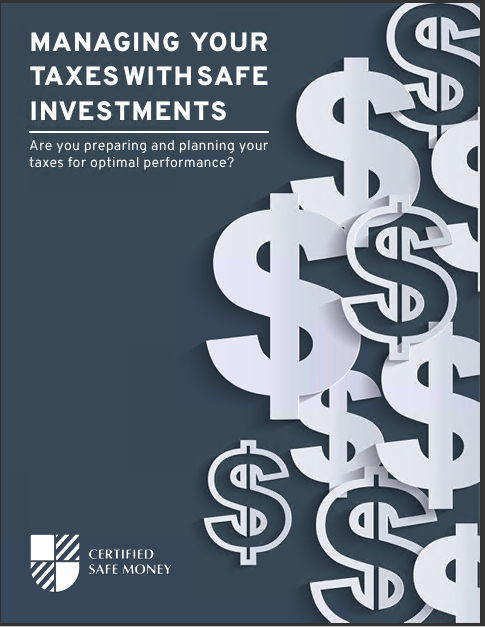Key Takeaways
- Fixed annuities provide guaranteed income streams, making them a stable option for retirees who seek financial security in uncertain markets.
- While offering tax-deferred growth, fixed annuities also provide a predictable return on investment, ensuring peace of mind during retirement years.
Considering Fixed Annuities? Here’s How They Can Fit Into Your Retirement Strategy
Fixed annuities are becoming an increasingly popular component of retirement planning, especially as financial markets continue to exhibit volatility. For those nearing retirement, ensuring a steady income stream that can withstand the uncertainties of market fluctuations is a priority. Fixed annuities offer a solution by providing guaranteed income, which can help retirees maintain their lifestyle without the anxiety that often accompanies market-based investments. Understanding how fixed annuities work, their benefits, and how they can be integrated into a broader retirement strategy is crucial for making informed decisions about your financial future.
Understanding Fixed Annuities: A Closer Look
Fixed annuities are insurance products that guarantee a fixed interest rate on your investment for a specified period, typically ranging from a few years to decades. When you purchase a fixed annuity, you enter into a contract with an insurance company, which in return promises to pay you a steady income stream, either for a predetermined number of years or for the rest of your life.
The primary appeal of fixed annuities lies in their predictability. Unlike variable annuities or mutual funds, where returns can fluctuate based on market performance, fixed annuities offer a stable and guaranteed return. This feature is particularly attractive to retirees or near-retirees who are risk-averse and prefer a reliable income to support their post-retirement life.
Types of Fixed Annuities
There are two main types of fixed annuities: traditional fixed annuities and fixed indexed annuities.
-
Traditional Fixed Annuities: These annuities offer a guaranteed interest rate for the life of the contract. The rate is predetermined and does not change regardless of market conditions. This type of annuity is ideal for individuals who want a stable, predictable income without any exposure to market risk.
-
Fixed Indexed Annuities (FIAs): These annuities are tied to a market index, such as the S&P 500, which means your returns can increase if the index performs well. However, unlike variable annuities, FIAs come with a guaranteed minimum return, ensuring that your principal investment is protected even if the market underperforms. FIAs offer a blend of security and growth potential, making them an attractive option for those who want to participate in market gains without risking their principal.
The Role of Fixed Annuities in a Retirement Portfolio
Incorporating fixed annuities into a retirement portfolio can be a smart move, especially for individuals seeking to balance growth and security. While other investment vehicles like stocks and bonds offer growth potential, they also come with inherent risks. Fixed annuities, on the other hand, provide a safety net by ensuring that a portion of your retirement income is protected from market volatility.
Diversification and Risk Mitigation
One of the fundamental principles of investing is diversification—spreading your investments across different asset classes to reduce risk. Fixed annuities can play a crucial role in this strategy by offering a stable income source that is not correlated with the stock market. This can be particularly beneficial during periods of economic downturn when other investments may lose value.
For example, if you have a retirement portfolio heavily invested in equities, a market correction could significantly impact your savings. By allocating a portion of your portfolio to fixed annuities, you can ensure that at least some of your income remains unaffected, providing peace of mind and financial stability.
Longevity Risk Management
Longevity risk, or the risk of outliving your savings, is a major concern for retirees. With life expectancy increasing, many individuals worry that their retirement savings may not last as long as they need. Fixed annuities address this concern by offering lifetime income options, which guarantee payments for as long as you live. This can be particularly reassuring for individuals without other sources of guaranteed income, such as a pension.
By incorporating a fixed annuity into your retirement strategy, you can create a reliable income floor that covers your essential expenses, reducing the likelihood that you’ll outlive your savings.
Tax Advantages of Fixed Annuities
In addition to providing a guaranteed income, fixed annuities offer several tax benefits that can enhance your retirement strategy. One of the most significant advantages is tax-deferred growth. Unlike other investments, where you may have to pay taxes on interest, dividends, or capital gains annually, the earnings on a fixed annuity grow tax-deferred until you start taking withdrawals. This allows your investment to compound over time without the drag of annual taxes.
Strategic Withdrawals and Tax Planning
When it comes time to withdraw from your fixed annuity, the IRS considers the earnings portion of your payout as taxable income, while the principal portion is typically tax-free. This tax treatment can be strategically managed to minimize your tax liability. For instance, if you anticipate being in a lower tax bracket during retirement, you may benefit from deferring annuity income until then, reducing the overall taxes you’ll pay on those withdrawals.
Moreover, if your fixed annuity is held in a qualified retirement account, such as an IRA or 401(k), your withdrawals may be subject to different tax rules, including required minimum distributions (RMDs). Understanding these nuances and planning accordingly can help you maximize your income while minimizing taxes during retirement.
Balancing Liquidity and Flexibility
One potential drawback of fixed annuities is their lack of liquidity. Once you purchase an annuity, your money is typically locked in for the duration of the contract, and early withdrawals may incur surrender charges and tax penalties. This lack of liquidity means that fixed annuities may not be suitable for everyone, particularly those who may need immediate access to their funds.
Laddering Strategies for Flexibility
To address the liquidity issue, some investors employ a strategy known as annuity laddering. This involves purchasing multiple fixed annuities with varying maturity dates. By staggering the start dates of your annuities, you can create a more flexible income stream that allows you to access funds at different times throughout your retirement.
For example, you might purchase three annuities: one that begins paying out in five years, another in ten years, and a third in fifteen years. This strategy not only provides more flexibility but also allows you to take advantage of potentially higher interest rates as your annuities mature.
Evaluating the Costs and Fees of Fixed Annuities
While fixed annuities offer many benefits, it’s important to carefully consider the associated costs and fees before making a purchase. These can include administrative fees, mortality and expense risk charges, and surrender charges if you withdraw funds early.
Comparing Products and Providers
Not all fixed annuities are created equal, and the costs can vary significantly between products and providers. Before purchasing an annuity, it’s essential to shop around and compare the fees, interest rates, and terms offered by different insurance companies. Working with a financial advisor who specializes in retirement planning can also help you navigate these complexities and select the annuity that best meets your needs.
Integrating Fixed Annuities with Other Retirement Income Sources
Fixed annuities can be an excellent complement to other retirement income sources, such as Social Security, pensions, and investment portfolios. By creating a diversified income stream, you can ensure that your retirement savings are resilient and capable of weathering various economic conditions.
Social Security and Annuities: A Synergistic Approach
Social Security is a foundational component of most retirement plans, providing a guaranteed income for life. However, Social Security benefits alone may not be sufficient to cover all your expenses, especially if you have a long retirement. Fixed annuities can help bridge this gap by providing additional guaranteed income.
For instance, you might use a portion of your retirement savings to purchase a fixed annuity that, when combined with Social Security, covers your essential living expenses. This approach ensures that your basic needs are met, allowing you to invest your remaining savings more aggressively or use them for discretionary spending.
Creating a Sustainable Withdrawal Strategy
A sustainable withdrawal strategy is critical for ensuring that your retirement savings last throughout your lifetime. Fixed annuities can play a key role in this strategy by providing a reliable income stream that reduces the need to draw down other investments, such as stocks or bonds, during market downturns.
For example, you could structure your retirement income so that your fixed annuity covers your fixed expenses, such as housing, utilities, and groceries, while withdrawals from your investment portfolio are used for discretionary spending, such as travel or hobbies. This approach allows you to weather market volatility without having to sell assets at a loss, preserving your portfolio for the long term.
A Tailored Approach to Retirement Planning
Fixed annuities are not a one-size-fits-all solution, and their suitability depends on your individual circumstances, including your risk tolerance, financial goals, and retirement timeline. Working with a financial advisor can help you determine whether a fixed annuity is right for you and how it can be integrated into your broader retirement strategy.
Aligning Annuity Purchases with Retirement Goals
When considering a fixed annuity, it’s important to align your purchase with your specific retirement goals. For example, if your primary concern is covering essential expenses, a traditional fixed annuity that provides a guaranteed income for life may be the best option. On the other hand, if you’re looking for growth potential while still protecting your principal, a fixed indexed annuity might be more suitable.
Additionally, timing your annuity purchase is crucial. Interest rates can have a significant impact on the income generated by a fixed annuity, so it’s important to consider the current rate environment and whether it makes sense to buy now or wait for potentially higher rates in the future.
Fixed Annuities as a Pillar of Retirement Security
Fixed annuities can be a cornerstone of a well-rounded retirement plan, offering the security of guaranteed income and the peace of mind that comes with financial stability in uncertain times. By providing a predictable and steady income stream, they allow retirees to focus on enjoying their retirement years without the stress of market fluctuations. When integrated thoughtfully with other income sources, such as Social Security and investment portfolios, fixed annuities can help create a balanced, diversified retirement strategy that ensures both stability and flexibility.
For retirees who prioritize security and want to minimize the risk of outliving their savings, fixed annuities offer a dependable solution. However, like any financial product, they are not without drawbacks, such as limited liquidity and potential fees. Therefore, it’s essential to evaluate your individual needs, financial goals, and the specifics of any annuity contract carefully before committing. Working with a knowledgeable financial advisor can help you navigate these complexities and tailor a retirement strategy that aligns with your unique situation.
Contact Information:
Email: biancachavez@bedrockfs.com
Phone: 6029307914














